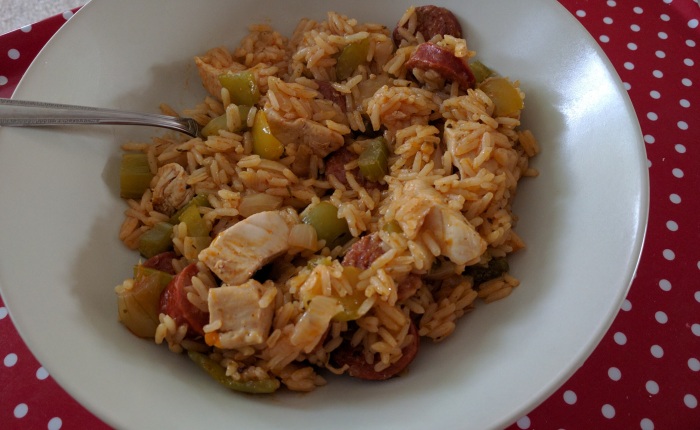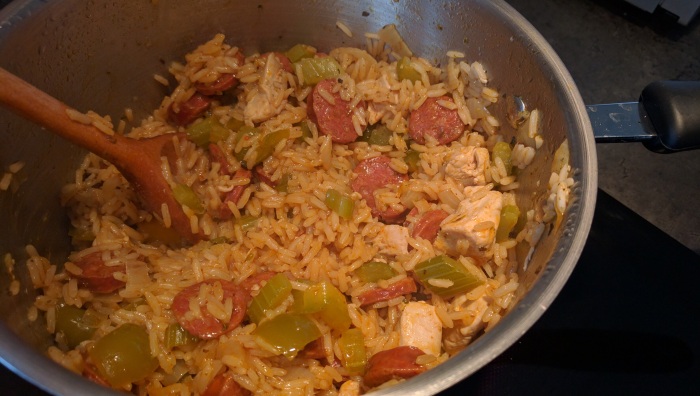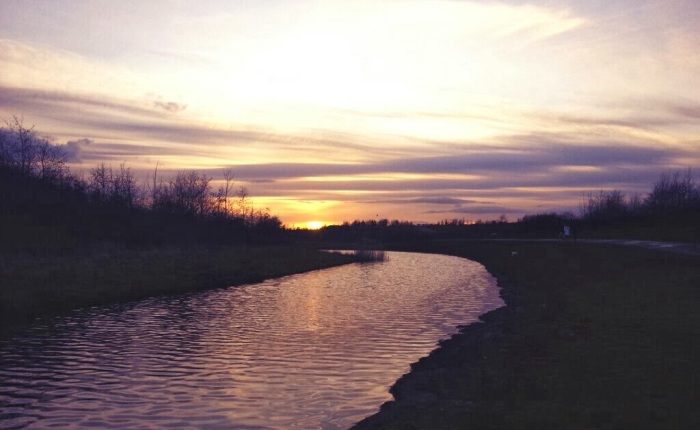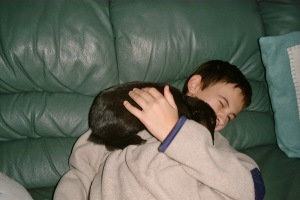6:30 – My alarm woke me up as normal and I got showered and dressed with the thought of going to hospital instead of going to work. I made sure to dress in comfy clothes as an infusion always means sitting around for several hours.
7:00 – I had my normal breakfast of porridge, banana and honey, accompanied by my usual cup of Clipper Morning Tea. I choose to avoid caffeine when possible so I keep a well stocked cupboard of herbal tea. The Clipper Morning Tea is my favourite way to start the day although it’s quite hard to get hold of now.
7:30 – Following my breakfast I booted up my work laptop and ran through my emails making sure there wasn’t anything urgent that needed a response and thankfully there wasn’t!
8:00 – I set off for hospital (Royal Victoria Infirmary, Newcastle) for my 8:30 appointment and made sure to pick up my kindle and headphones to keep me entertained whilst being infused.
8:23 – Upon arriving at the hospital I bought a bottle of water and some crisps in the insanely warm hospital shop. I did the whole “it’s hot in here isn’t it?” to the shop assistant and she respond glumly with “yes I know, it’s going to be fixed today”. She’d clearly heard my line several times already.
8:26 – I walked into at Ward 51 (our own version of Area 51), gave them my name and sat down in the large ‘infusion’ room. There are about 10 big comfy chairs in this room, tables for people to put their things on and lots of cushions for backs and resting needled arms on.
8:45 – After being told to sit down anywhere, I got shifted around twice to accommodate a pop up clinic being set up in the same room. Musical chairs is a great pre-infusion warm up.
9:00 – A nurse walked over and took my temperature and blood pressure and asked how I’d been feeling recently. They ask this to ensure that I don’t have any bugs. If I did, I wouldn’t be allowed to get my immune system suppressing infusion. She also informed me that my infusion wasn’t quite ready yet and that it was on it’s way from the pharmacy. This is normal.
9:22 – A different nurse put a cannula in my arm and took two vials of blood. I’ll admit, I’m not entirely sure what the blood is for. I’m so used to having blood taken that it’s easy to forget to ask. At some point in the future I’m just going to install a tap on my arm, it would make life much easier.
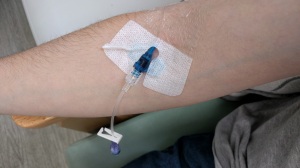
9:29 – One hour after my initial appointment time and following a dose of hydrocortisone, I finally get plugged into my Remsima Infusion. The nurse describes the hydrocortisone as a way of giving my body a protective barrier in preparation for my infusion. For my previous 5 infusion I’d been given Inflectra but from now on I was told it will be Remsima. I was assured that the medications were exactly the same. The only difference is that Remsima is half of the cost of Inflectra.

9:31 – I was offered a cup of tea or coffee and some shortbread biscuits. I’m always surprised that hospitals, especially in an IBD ward, only offer caffeinated hot drinks. Many IBD patients will avoid caffeine. I always bring my own tea bags and they’re happy enough to provide a cup of hot water.
9:46 – Another patient turned up to be infused, but with iron instead of a biologic. Normally there are several patients being infused at the same time but today it was very quiet.
10:02 – A beeping machine signalled that iron girl was done and ready for her flush. Beeping machines are a popular feature of infusion wards. A flush does what it says on the tin and flushes any remaining medication out of the tube and the patients veins.
10:12 – I tucked into my crisps as another gentleman got hooked up for his first infusion.
10:50 – Despite nipping to the loo pre-infusion, my earlier tea began to play on my mind. I unplugged my Infusion machine from the wall (the plug is just used to charge the machine) and managed to nip to the loo and back without setting the machine alarm off. Unless you get infused, you won’t understand that this is indeed a big achievement.
11:26 – A beep signalled that the Remsima was almost done and it was time to get a flush.
12:00 – At 12 on the dot the machine beeped again and that was my full infusion over. Apart from being tired, I felt totally fine at this point. Under instruction, a student nurse removed my cannula (it was her first time), and I made my appointment for my next infusion in 8 weeks time. It was incredibly hard to resist jokingly crying out in pain when the nurse removed my cannula but I managed to hold back given that she looked exceptionally nervous.
13:00 – I arrived at home after a quick trip to the shops to pick up supplys for lunch before opening up my laptop to check my work emails again.
14:00 – Following my lunch I joined the first of two one hour long conference calls. The first of which I needed to lead, the second I was able to just listen.
16:30 – This takes us right up to date with me writing this blog post. I’m feeling completely exhausted at the moment and have a splitting headache but other than that I’m totally fine. The headache is equally likely to have come from my conference calls, or possibly pre-infusion tension, than it is the infusion itself. I generally find I always have a headache after my infusions although normally it rears its head the following morning. After I post this blog I’m just going to relax for the rest of the day before returning to the office tomorrow morning. I may even have another go at cooking beer dough pizza if I feel up to it.
If anybody has any questions about receiving an infusion just send me an email or leave a message in the comments section below!

